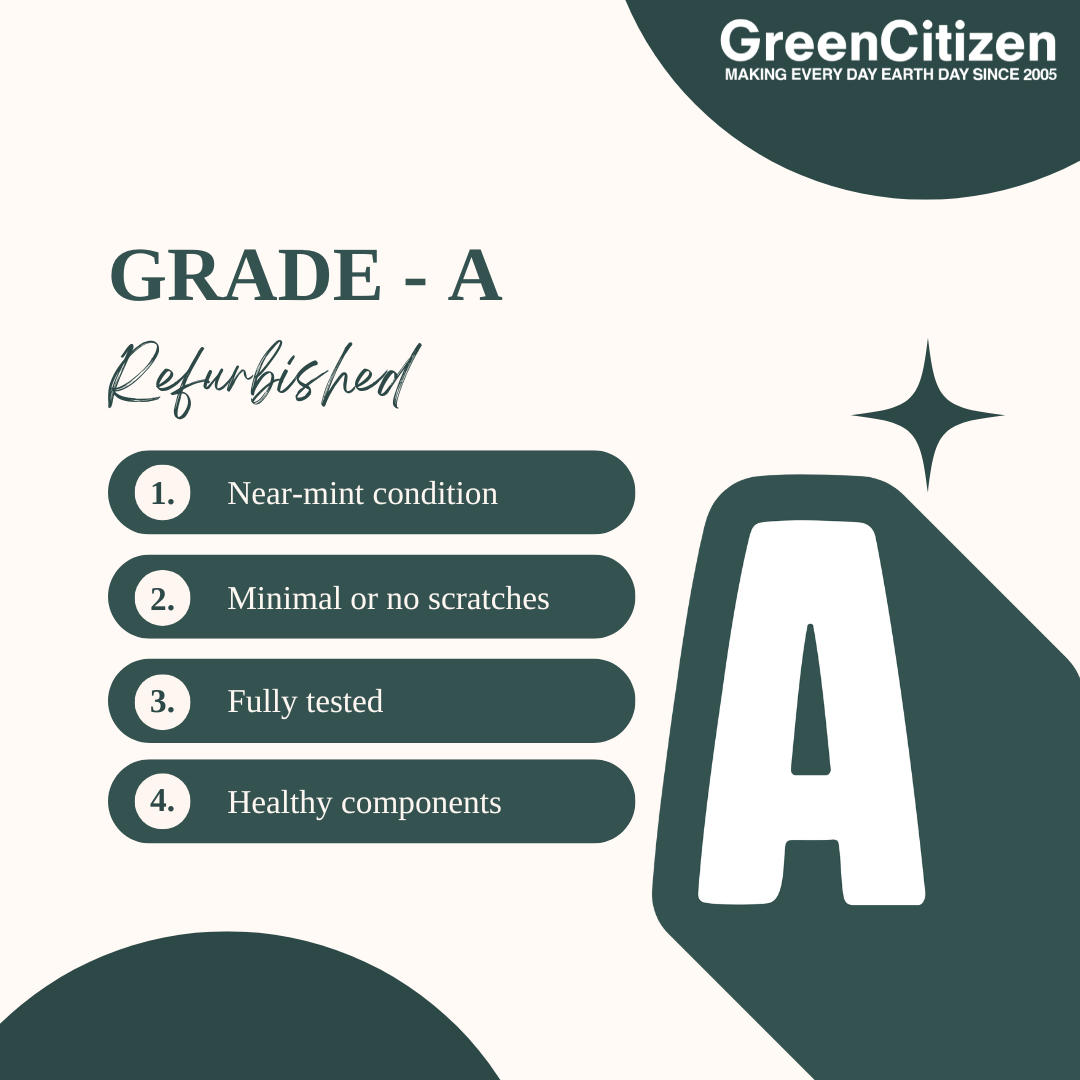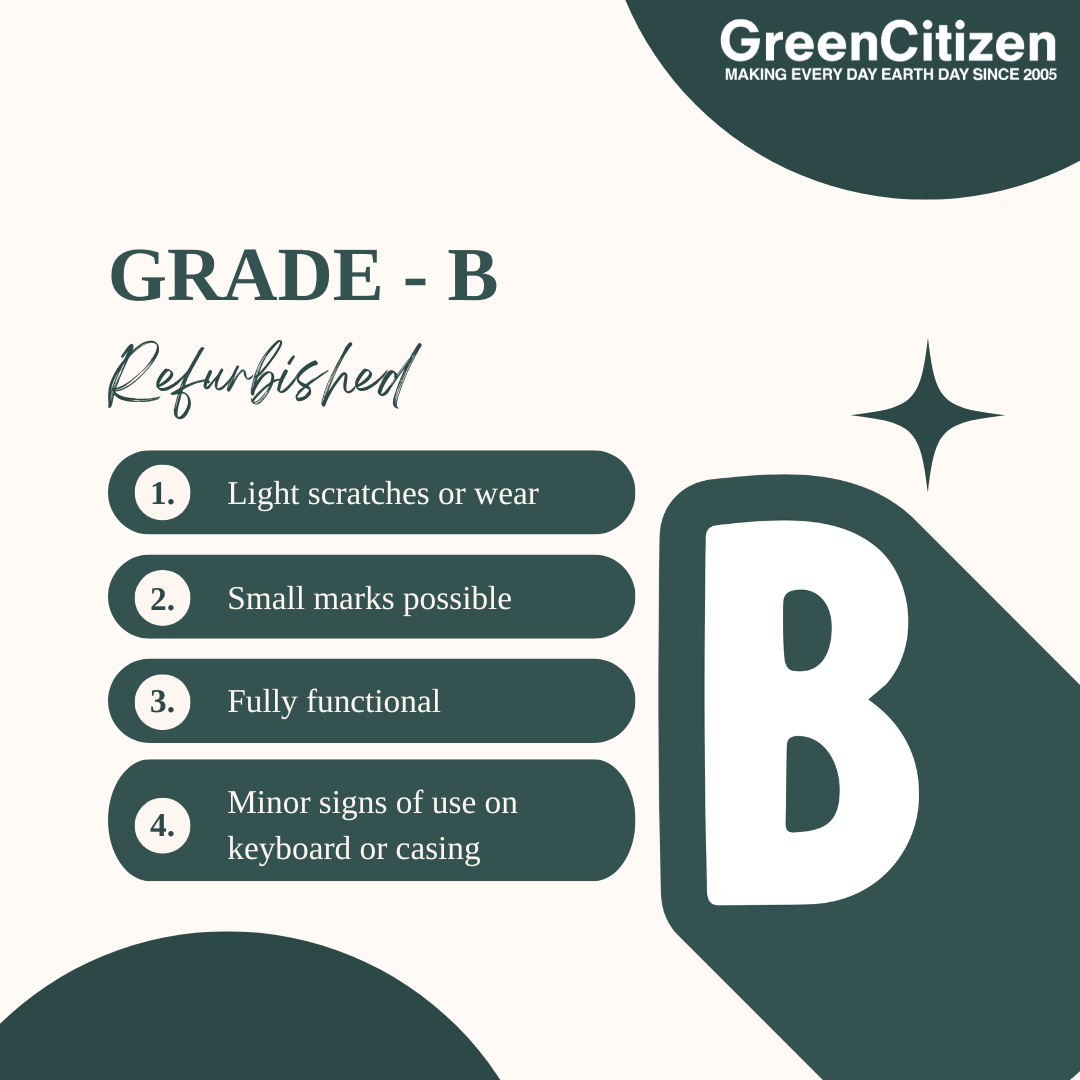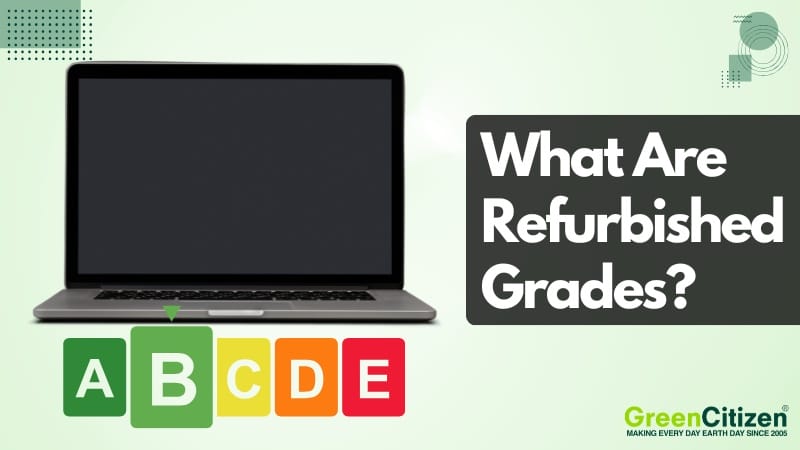Refurbished electronics can save you hundreds of dollars, but understanding refurbished grades is where most buyers get stuck. What exactly is a Grade A refurbished laptop compared to Grade B or C? And how do you know which one is worth your money?
Refurbished grades are condition labels — Grade A means like-new, while lower grades like B, C, or D show more visible wear but still function properly. These grades exist to set buyer expectations, but here’s the catch: there’s no universal standard.
A Grade B from one seller in California may look more like a Grade C from another reseller online.
That’s why it’s important to learn how refurbished grading systems actually work, what each grade really means, and which grade makes sense for your needs — whether you’re shopping for a student laptop in San Francisco, a business workstation in New York, or just a budget backup device anywhere else in the U.S.
Key Takeaway: What Do Refurbished Grades Mean?
Refurbished grades rank pre-owned electronics by cosmetic condition, from like new to heavily used. Systems vary — A, B, C, D, Excellent/Good/Fair, or numeric — but all follow the same principle: higher grades mean better appearance and higher price, lower grades mean more wear at a lower cost. Always confirm the seller’s grading criteria before buying.

Green Store by GreenCitizen
- Over 350,000 customers served
- 99.3% positive feedback
Professionally tested, cleaned, and prepared
What Are Refurbished Grades?
Refurbished grades indicate the cosmetic condition of a pre-owned device after testing and reconditioning, usually categorized from Grade A (like new) to Grade D (heavily used). All graded items should still function properly, unless specifically listed as “parts only” or “fair.”
Some sellers also factor in battery health, internal testing, or numeric systems (A1, A2, etc.), but there’s no universal grading standard.
Refurbished grades are a shorthand created by resellers and refurbishers to classify pre-owned electronics by condition. Instead of listing every scratch or battery cycle, sellers group devices into broad categories so buyers can quickly compare quality and price.
The system exists mainly for convenience. It helps a student shopping for a budget laptop instantly recognize the difference between a “Grade A” device in near-mint condition and a “Grade C” model that shows heavy use. Businesses also rely on grading when bulk-purchasing computers to balance cost with performance.
What refurbished grades do not provide is a universal guarantee. Unlike certified pre-owned cars, electronics don’t follow a single global standard. Each seller may apply their own criteria — some focus on cosmetic condition, while others factor in battery health or component testing. That’s why knowing the general meaning of each grade is useful, but checking the seller’s specific definition is essential.
What Do Refurbished Grades A, B, C, and D Mean?
Refurbished grades are a quick way to tell how close a pre-owned device is to new. Grade A refurbished products look almost untouched, Grade B shows light everyday wear, Grade C carries noticeable scratches or dents but still runs fine, and Grade D is heavily used with flaws yet sold at the lowest price.
| Grade | Cosmetic Condition | Functionality | Best For |
|---|---|---|---|
| Grade A | Near-mint, minimal or no scratches | Fully tested, strong battery and components | Professionals, students, gifting |
| Grade B | Light scratches or wear, small marks possible | Fully functional, minor signs of use on keyboard or casing | Value-focused buyers |
| Grade C | Noticeable scratches, dents, or faded keys | Still works well, battery may be slightly weaker | Budget buyers, backup devices |
| Grade D | Heavy cosmetic damage, scuffs, cracks possible | May have minor issues but usable; lowest quality tier before “parts only” | Hobbyists, repairs, short-term use |
What Is Grade A Refurbished?
Grade A devices are as close to new as refurbished gets. They show little to no cosmetic wear and perform at top levels. A Grade A laptop might have a flawless screen, intact casing, and a battery with strong health — perfect for anyone who wants reliability and appearance.

What Is Grade B Refurbished?
Grade B units have light signs of use, such as minor scratches or slight keyboard shine. They’re fully functional and often deliver the best balance of price and quality. A Grade B desktop or laptop is ideal for buyers who want solid performance without paying for “like new” cosmetics.

What Is Grade C Refurbished?
Grade C electronics show more noticeable cosmetic flaws — dents, worn keys, or visible scratches. They still function properly but may come with shorter battery life or moderate wear. They’re best for budget-conscious buyers who don’t mind the looks as long as the device works.

What Is Grade D Refurbished?
Grade D is the lowest category before “parts only.” These devices often have heavy wear and may include minor issues, such as a weak battery or non-critical defects. They’re cheapest and suited for hobbyists, repairs, or temporary use where appearance and longevity matter less.

🔎 Quick Recap of Refurbished Grades
- Grade A: Like new, minimal wear, fully tested.
- Grade B: Light wear, 100% functional, best value.
- Grade C: Noticeable wear, still works, budget-friendly.
- Grade D: Heavy wear, minor issues possible, cheapest option.
What’s the Difference Between Cosmetic vs. Functional Refurbished Grades?
Cosmetic refurbished grades describe how a device looks on the outside, while functional grades describe how well it performs on the inside.
For example, a laptop with a dented case and scratched lid might be graded as Cosmetic C, but if its battery, processor, and ports all pass testing, it could still be Functional A. This is why two devices with the same “Grade B” label may not always feel identical — some sellers weigh appearance more heavily, others include performance checks like battery health or storage diagnostics.
| Aspect | Cosmetic Grade | Functional Grade |
|---|---|---|
| Focus | Exterior appearance | Internal performance |
| Examples | Scratches, dents, scuffs, faded keys | Battery health, storage life, working ports |
| What It Tells You | How “new” the device looks | How reliably it will run |
| Possible Outcome | Rough on the outside, flawless inside | Looks clean but may have hidden wear |
The key takeaway is that refurbished grades are mostly cosmetic shorthand. Unless noted otherwise, buyers should assume the device is in good working order. If a seller also uses functional grading (or mentions terms like “parts only” or “fair”), it means there may be limits on how well the device operates.
🔎 Quick Recap: Cosmetic vs Functional Refurbished Grades
- Cosmetic Grade → about appearance only.
- Functional Grade → about performance and usability.
- Key Point → A device can look used but run perfectly — or look good but hide internal wear.
Why Do Refurbished Grades Differ Between Sellers?
Refurbished grades differ between sellers because there is no universal standard. Each company creates its own grading rules, which means a Grade B laptop from one refurbisher might look closer to Grade C from another.
Unlike certified pre-owned cars — which follow clear manufacturer-backed checklists — refurbished electronics don’t have an industry-wide grading authority. Some sellers base grades purely on cosmetic condition, while others also factor in battery health, storage performance, or overall diagnostics.
For example, one refurbisher might downgrade a laptop to Grade C if the battery is below 80%, while another still sells it as Grade B as long as it runs fine when plugged in. This inconsistency creates confusion for buyers who assume all grades mean the same thing.
You should remember that refurbished grades are guidelines, not guarantees. To avoid surprises, review the seller’s grading criteria, check real product photos, and confirm whether functionality is part of their grading system.
What Other Refurbished Grading Systems Exist?
While Grades A to D are the most common, many sellers use alternative grading scales such as descriptive terms or numeric codes. These variants follow the same principle — ranking items by cosmetic condition — but their labels can create confusion if you don’t know how they map to the A–D model.
Descriptive Grading Systems
Instead of letters, some sellers use words like Excellent, Very Good, Good, Fair, and Vintage.
- Excellent → Roughly equivalent to Grade A. Devices look almost new with minimal or no visible flaws.
- Very Good → Comparable to Grade B. Light scratches or signs of use, but everything works as expected.
- Good → Closer to Grade C. More noticeable wear such as dents, scuffs, or faded keys, yet still fully functional.
- Fair → Often overlaps with Grade D. Heavy cosmetic wear or minor defects, but usable for budget buyers.
- Vintage → A special category not tied to wear but to age or collectability. A “vintage” laptop or phone may be heavily worn yet valued because of rarity.
Descriptive terms sound reassuring (“Very Good” feels safer than “Grade C”), but they can be misleading. Always check what the seller means by each label.
Numeric or Hybrid Systems
Other refurbishers use numbers, such as A1, A2, B1, or a hybrid like Grade B+.
- A1 / A2 → Subgrades of Grade A. A1 may be flawless, while A2 allows a small blemish.
- B+ / B– → Splits Grade B into narrower ranges. B+ devices are closer to Grade A, while B– is closer to C.
- C1 / C2 → Some sellers refine Grade C to capture different levels of visible wear.
Numeric systems add precision but only work if the refurbisher publishes clear definitions. A “B+” from one seller could still mean something different from “B+” at another.
Why This Matters to Shoppers
No matter which system you see — letters, words, or numbers — the logic is the same:
- Top tier = near-new cosmetics and full functionality.
- Middle tiers = noticeable but acceptable wear, still reliable.
- Lowest tiers = heavy wear, possible quirks, lowest cost.
Understanding how alternative systems map back to A–D helps you cut through marketing language and set realistic expectations.

Green Store by GreenCitizen
- Over 350,000 customers served
- 99.4% positive feedback
Professionally tested, cleaned, and prepared
What Refurbished Grades Really Mean for Shoppers
Refurbished grades are the bridge between price and peace of mind. They give buyers a shorthand for how close a pre-owned device is to new, but the details behind those grades can shift depending on who is doing the grading. From classic A–D scales to descriptive terms like “Excellent” or numeric systems like A1 or B+, the meaning is always about balancing condition with value.
For shoppers, the smartest move is to use grades as a guide, not the final word. Look at photos, read seller definitions, and decide which grade fits your priorities — appearance, functionality, or cost savings. With a clear understanding of refurbished grading systems, you can buy confidently, knowing exactly what to expect.
